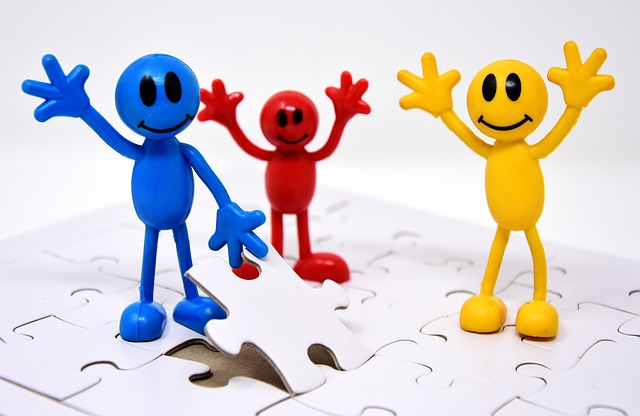Introduction to the “Tiny Bit of Kindling” Puzzle and Its Origin in The New York Times
For puzzle enthusiasts, the thrill of solving a challenging puzzle is unparalleled. One such enigma that has captured the imagination of many is the “Tiny Bit of Kindling” puzzle featured in The New York Times. This intriguing puzzle has left many scratching their heads, eager to crack its code. But what makes this particular puzzle so captivating? In this blog post, we will explore the origins of the “Tiny Bit of Kindling” puzzle, unravel its complexities, and provide strategies to help you become a master solver.
A Brief History of Puzzles: From Ancient Times to the Digital Age
Puzzles have been around for centuries, providing entertainment and mental stimulation. The earliest known puzzles date back to ancient civilizations where they were used for educational purposes. Fast forward to the present day, and puzzles have evolved into a variety of forms, from crosswords and Sudoku to digital brainteasers.
The New York Times, a renowned publication, has been a significant contributor to the world of puzzles. It introduced its first crossword puzzle in 1942, and since then, it has become a staple for puzzle lovers. The Tiny Bit of Kindling puzzle is one of the latest additions to their collection, and it has quickly gained popularity among readers.
Deconstructing the Puzzle: Analyzing the Elements of the “Tiny Bit of Kindling” Challenge
At its core, the “Tiny Bit of Kindling” puzzle is a tantalizing wordplay challenge. To solve it, one must decipher clues that lead to a specific answer. The clues often require lateral thinking and a keen eye for detail. The name “Tiny Bit of Kindling” itself hints at the nature of the puzzle—small pieces coming together to ignite a solution.
The puzzle typically consists of a grid where each cell contains a letter. Solvers must find the correct arrangement of letters to complete the puzzle. The clues can be cryptic, requiring solvers to think outside the box and consider multiple interpretations.
Strategies for Solving: Tips and Approaches from Puzzle Experts and Experienced Solvers
Solving puzzles like “Tiny Bit of Kindling” requires a combination of patience, creativity, and logical thinking. Here are some strategies from puzzle experts and experienced solvers:
- Start with the Easy Clues: Begin by solving the clues you find most straightforward. This will give you a foothold and potentially reveal patterns that can help with more challenging clues.
- Look for Patterns: Pay attention to recurring themes or patterns in the clues. Sometimes, the answer lies in recognizing a familiar wordplay or phrase.
- Break Down the Clues: Analyze each clue methodically. Identify any keywords or phrases that stand out and consider their possible meanings.
- Use a Process of Elimination: If you’re unsure about a particular clue, eliminate any obviously incorrect options. This can help narrow down the possibilities.
- Take Breaks: If you find yourself stuck, take a break and return to the puzzle later. A fresh perspective can often lead to new insights.
Community Engagement: Sharing Success Stories and Comments from Readers Who Solved the Puzzle
One of the joys of solving puzzles is sharing the experience with others. The New York Times puzzle community is vibrant and supportive, with solvers often sharing their success stories and tips. Here are some comments from readers who have tackled the “Tiny Bit of Kindling” puzzle:
- Jane D. from New York shared, “Solving this puzzle was a rollercoaster! I spent hours on it, but the satisfaction of finally cracking it was worth every minute.”
- Tom S. from California commented, “The ‘Tiny Bit of Kindling’ puzzle was a real brain teaser. I found that discussing clues with fellow solvers online helped me see things from different angles.”
- Maria L. from Texas said, “I love how this puzzle challenges you to think creatively. It’s a great way to keep my mind sharp.”
The Cognitive Benefits of Puzzles: How Solving Challenges Like This Can Improve Mental Agility and Critical Thinking Skills
Engaging in puzzles is not just a fun pastime; it also offers numerous cognitive benefits. Research has shown that regularly solving puzzles can improve mental agility, enhance memory, and boost critical thinking skills. Here are some key benefits:
- Improved Problem-Solving Skills: Puzzles require you to think logically and strategically, which can enhance your problem-solving abilities in everyday life.
- Enhanced Memory: Working on puzzles helps to reinforce connections between brain cells, improving short-term memory and recall.
- Increased Creativity: Puzzles often require creative thinking and the ability to see things from different perspectives.
- Stress Relief: The focused concentration required for solving puzzles can be a great way to relax and de-stress.
Exploring Different Types of Puzzles: A Diverse World of Challenges
Puzzles come in various shapes and formats, each offering unique challenges and experiences for solvers. From logic puzzles that rely on deduction to visual puzzles that test your spatial awareness, there is something for everyone. Some popular categories include:
- Crossword Puzzles: These grid-based word games require solvers to fill in words based on provided clues, often mixing general knowledge with clever wordplay.
- Sudoku: A number-based logic puzzle that involves filling a grid so that each column, row, and designated subgrid contains all digits from 1 to 9.
- Jigsaw Puzzles: These tactile challenges involve fitting together interlocking pieces to form a complete picture, fostering problem-solving and patience.
- Riddles: Short, often humorous questions or statements that require lateral thinking to uncover their hidden meanings or answers.
- Escape Room Puzzles: Featuring a combination of physical and mental challenges, these real-life adventures require participants to solve riddles and puzzles to ‘escape’ within a set time.
Cultivating a Puzzle-Solving Mindset: Developing Patience and Resilience
A successful puzzle solver often cultivates a mindset that embraces patience and resilience. Challenges can be frustrating, yet those who persevere often find greater satisfaction in their eventual success. By viewing puzzles as opportunities for growth and learning, solvers can develop a positive attitude towards challenges in general, both on and off the puzzle page. Emphasising the process over the outcome can eliminate pressure and allow for a more enjoyable experience, encouraging a fun exploration of ideas and solutions.
Conclusion
The “Tiny Bit of Kindling” puzzle from The New York Times is more than just a word game; it’s a mental challenge that brings together a community of solvers, improves cognitive skills, and provides a sense of accomplishment. Whether you’re a seasoned puzzle enthusiast or new to the world of brainteasers, this puzzle offers a rewarding experience.
We encourage you to share your thoughts and experiences with the “Tiny Bit of Kindling” puzzle and puzzles in general. Join the conversation and connect with fellow solvers who share your passion for mental challenges. Happy puzzling!
Frequently Asked Questions about the “Tiny Bit of Kindling” NYT Puzzle
What is the theme of the “Tiny Bit of Kindling” puzzle?
The theme often revolves around everyday items or concepts that spark interest and curiosity.
How long does it typically take to solve this puzzle?
The time varies by solver but generally ranges from 20 minutes to an hour, depending on experience.
Is there a specific skill level recommended for this puzzle?
It is suitable for a wide range of skill levels, though some prior experience with crosswords can be beneficial.





